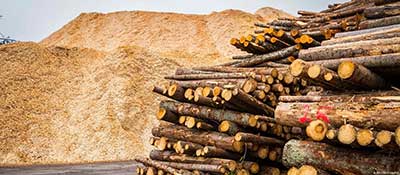Date: 27/03/2023
Relevance: GS-3: Economic Development, Biodiversity and Environment.
Key Phrases: renewable energy source, subsidize wood burning, ecological consequences, sustainability of using firewood, European Academies Science Advisory Council.
Context:
- The European Union (EU) is currently embroiled in a political debate over the future of firewood as a renewable energy source.
Key Highlights:
- As the bloc aims to rid itself of dependence on Russian fossil fuels, it hopes to increase its renewable energy consumption to 45% by 2030.
- Biomass, which includes firewood, currently makes up 60% of the EU’s renewable energy mix.
- However, as the EU reviews its renewable power legislation, concerns have been raised about the sustainability of using firewood as a renewable energy source.
- This means that member countries can subsidize wood burning, as long as certain sustainable sourcing rules are met.
- The EU officially counts wood and other biomass as carbon neutral, based on the premise that CO2 emitted through burning will be reabsorbed by more trees in the future.
Do you Know?
- For an equal amount of heat or electricity, burning wood releases more CO2 than burning gas, oil and even coal.
- Burning firewood can release pollutants such as carbon monoxide, nitrogen oxides, and particulate matter, which can have negative health and environmental impacts.
- The efficiency of firewood burning can vary depending on the type of stove or fireplace used, as well as the quality of the firewood.
Concerns of Environmentalist:
- Some environmental groups argue that this subsidy setup is “insane” as EU citizens are paying energy companies to burn forests in the midst of a climate and biodiversity crisis.
- Scientific study suggests that the trend to replace coal with wood pellets as a means of generating electricity actually increases atmospheric levels of carbon dioxide for substantial periods of time.
- A 2019 report by the European Academies Science Advisory Council says the time it takes for carbon emissions associated with wood-burning to be evened out can range from years to decades or even centuries, depending on conditions.
Industry’s Claims:
- Industry groups argue that responsibly sourced biomass is essential for the EU’s green transition, especially in providing renewable heat.
- According to them, bioenergy needs to comply with strict sustainability criteria to ensure sourcing and use of biomass for energy does not cause any environmental harm or biodiversity loss.
- The European Parliament is proposing to limit subsidies for burning wood taken directly from forests and instead restrict state support to secondary wood products like sawdust.
- Lawmakers also want to phase down the amount of wood that counts toward EU renewable energy targets. This proposal aims to limit the unsustainable and inefficient use of wood.
- However, industry groups argue that this would disturb the practicalities of forest management, lead to further supply shortages of sustainable biomass, and thus impair energy security and increase prices.
Way Forward:
- The biomass must be sourced from sustainably managed forests, with logging practices that do not lead to deforestation or degradation of forest ecosystems.
- The use of biomass must not compete with other essential land uses, such as food production or conservation areas.
- The greenhouse gas emissions of using biomass for energy must be lower than those of fossil fuels.
- Furthermore, it is essential to consider the environmental impact of wood-burning.
- Burning wood releases particulate matter and carbon dioxide, which contribute to air pollution and climate change, respectively.
- The use of appropriate combustion technology, such as low-emission stoves and boilers, is necessary to minimize environmental impact.
- The sourcing and transportation of biomass must be optimized to minimize carbon emissions.
- Another important consideration is the impact of biomass use on biodiversity. Large-scale biomass production can lead to habitat destruction and loss of biodiversity, which could have severe ecological consequences.
- Therefore, the use of biomass for energy should be balanced with conservation efforts to protect and restore biodiversity.
Conclusion:
- The EU’s debate over the future of firewood as a renewable energy source highlights the complexities of transitioning to a greener energy system.
- While firewood may seem like a sustainable and renewable option, concerns about its sustainability and efficiency have been raised.
- The EU needs to strike a balance between ensuring energy security, meeting its renewable energy targets, and protecting the environment and biodiversity.
- It remains to be seen how the EU will resolve this debate and shape its renewable energy policy in the coming years.
Source: The Indian Express
Mains Question:
Q. The use of biomass, including firewood, is a significant part of the EU's renewable energy mix. Discuss the sustainability criteria required for sourcing and using biomass for energy and the environmental impact of wood-burning. (250 words).







